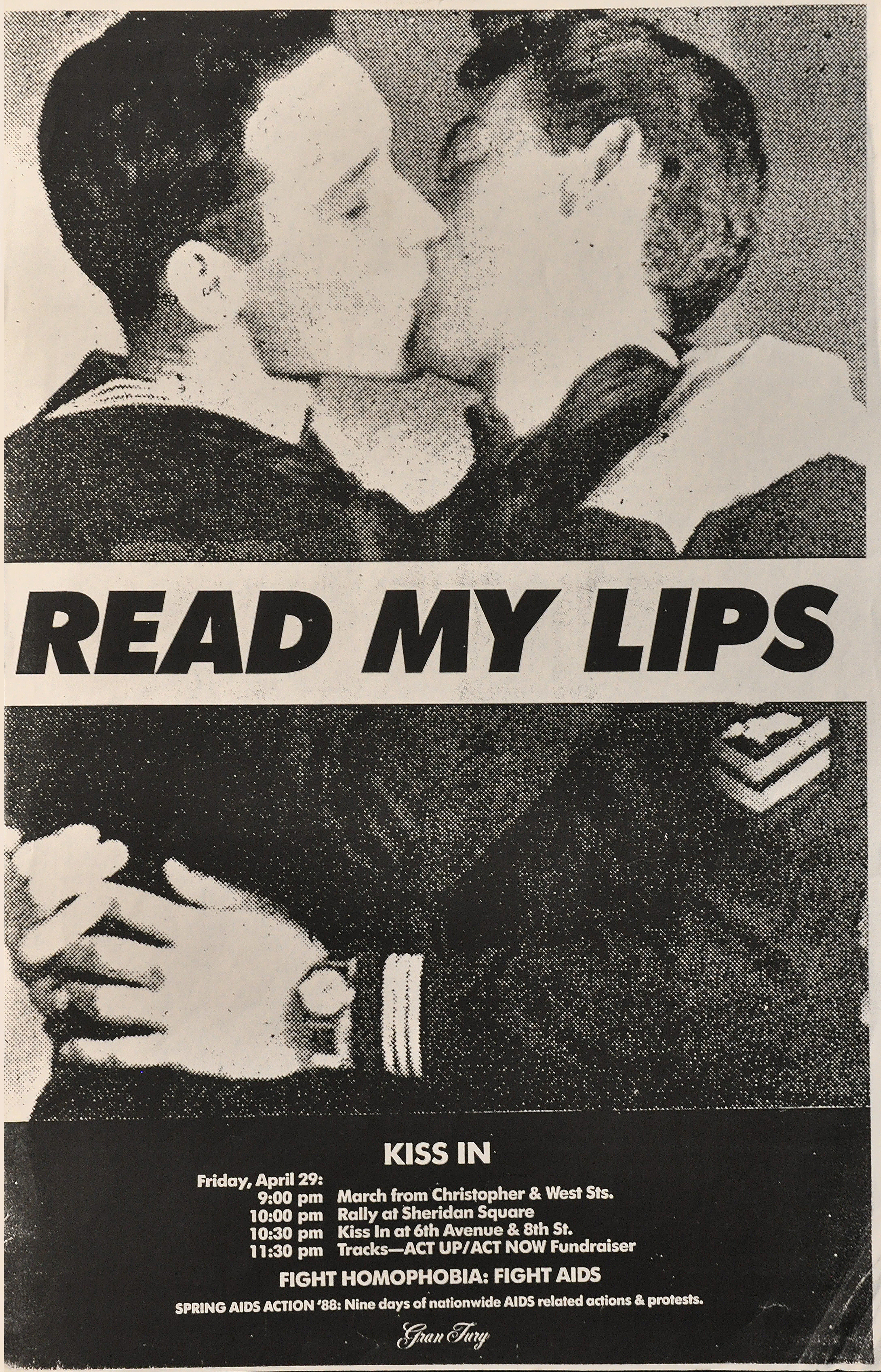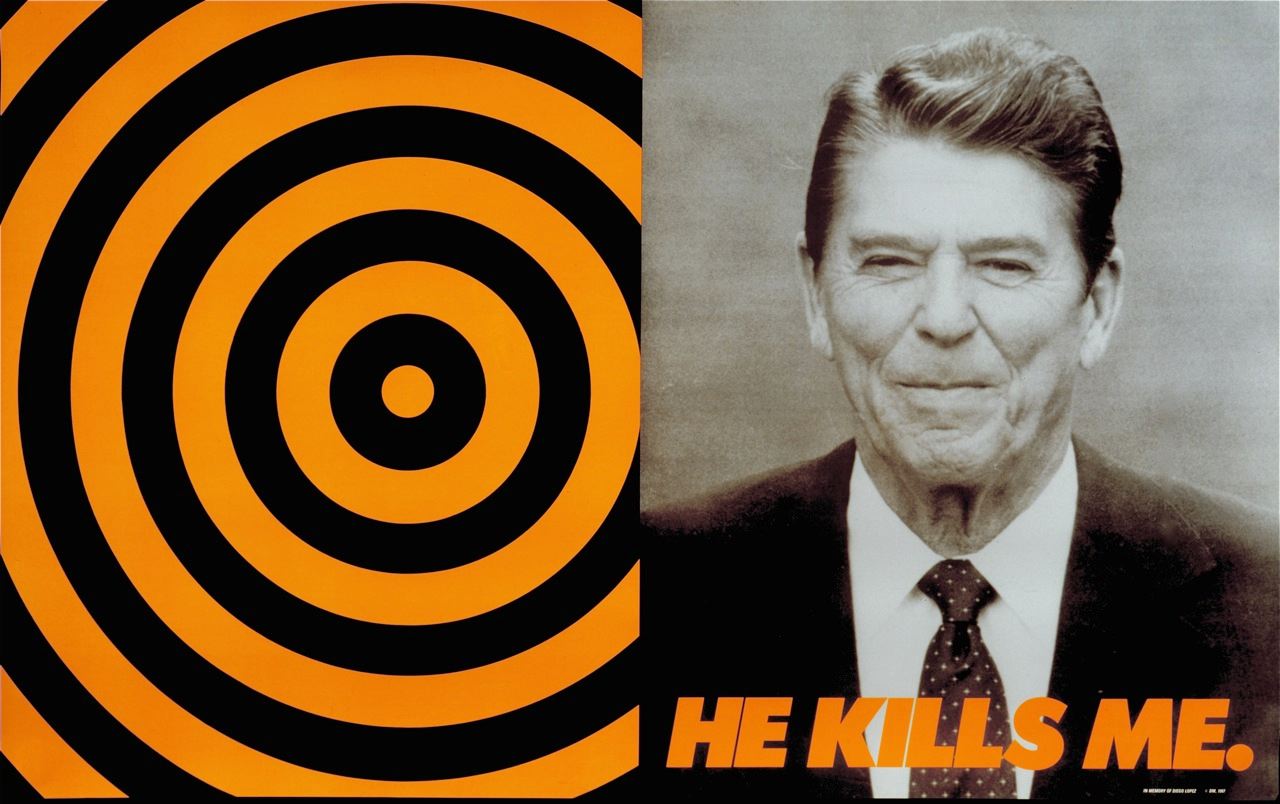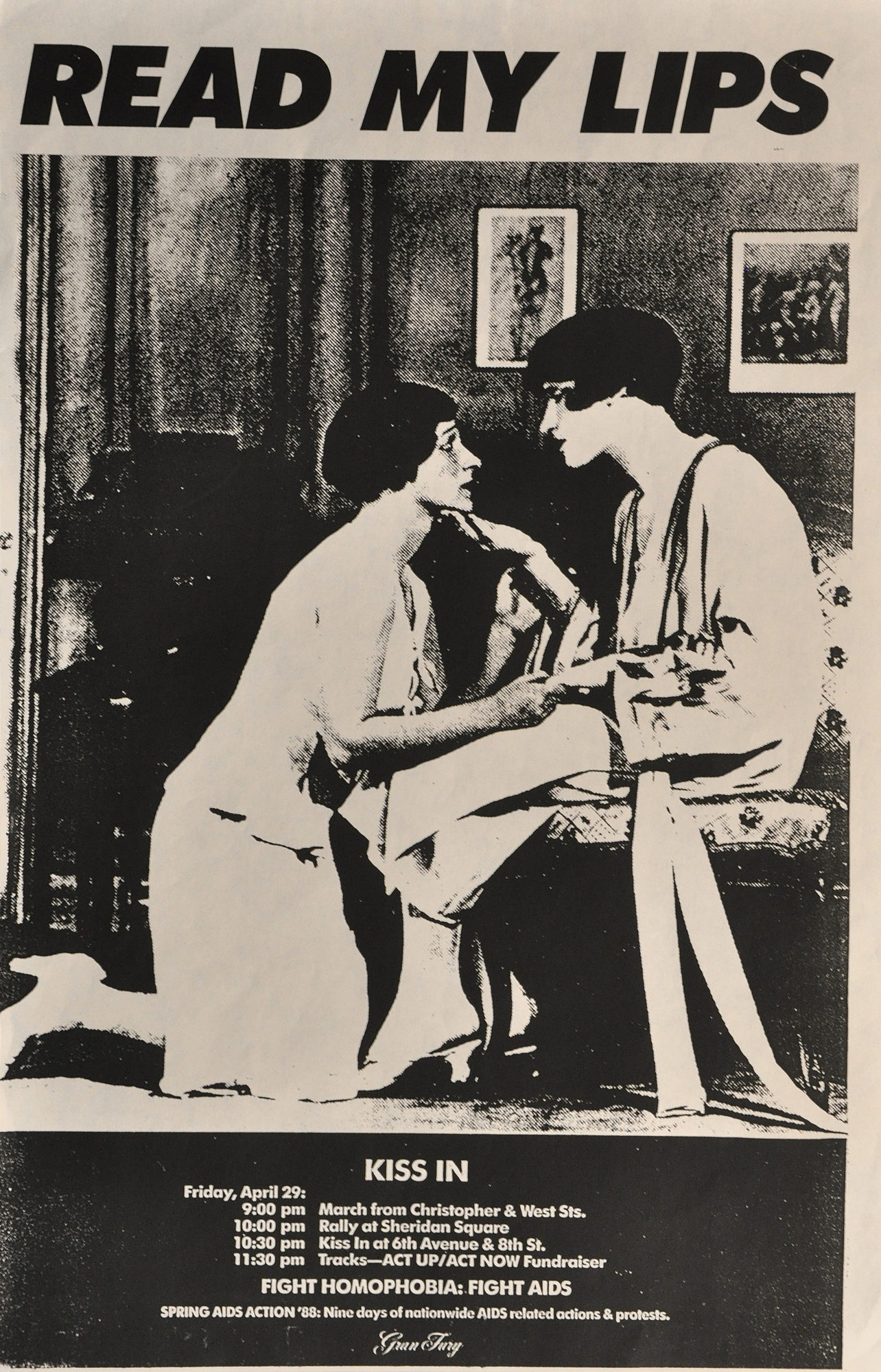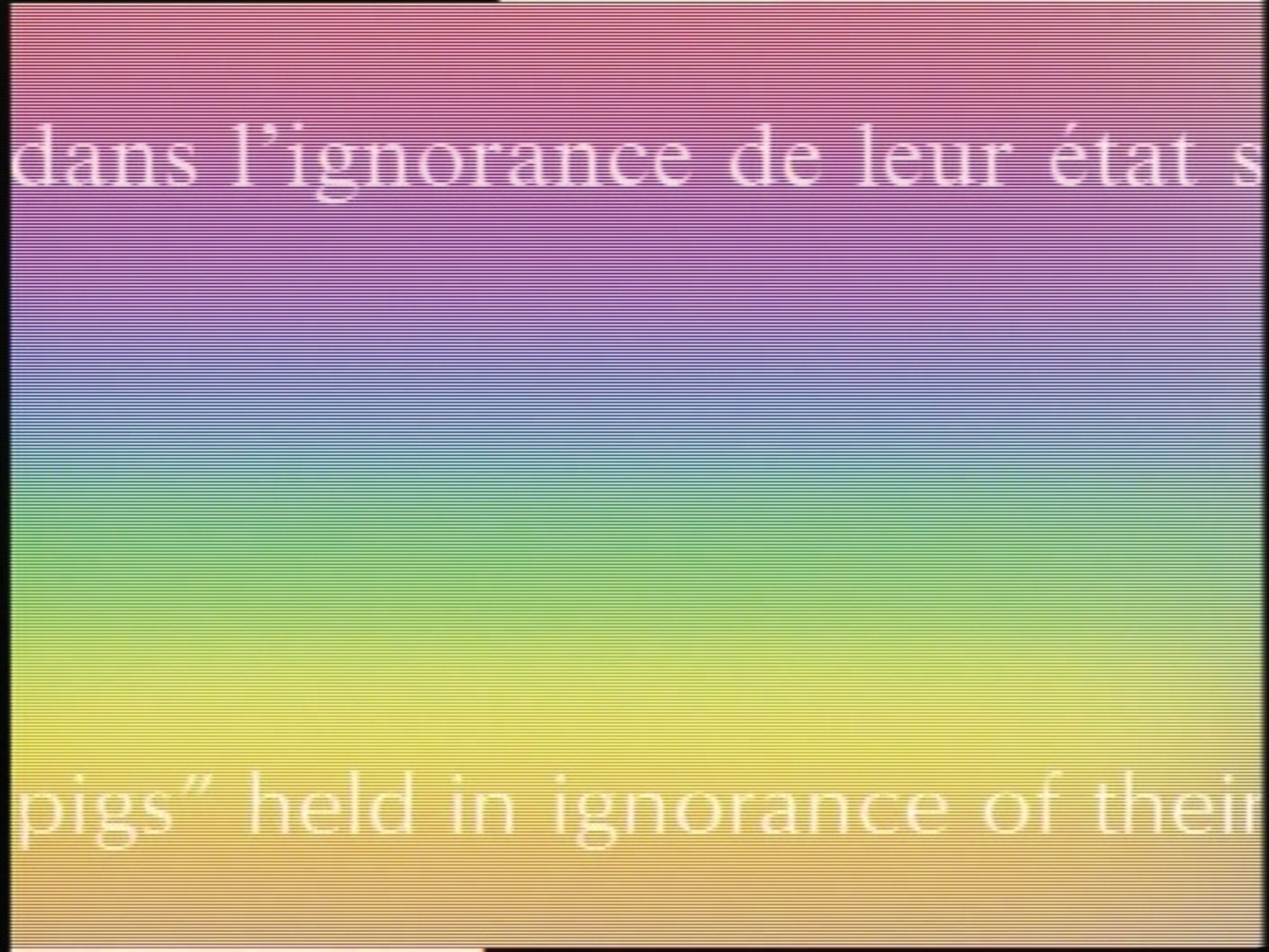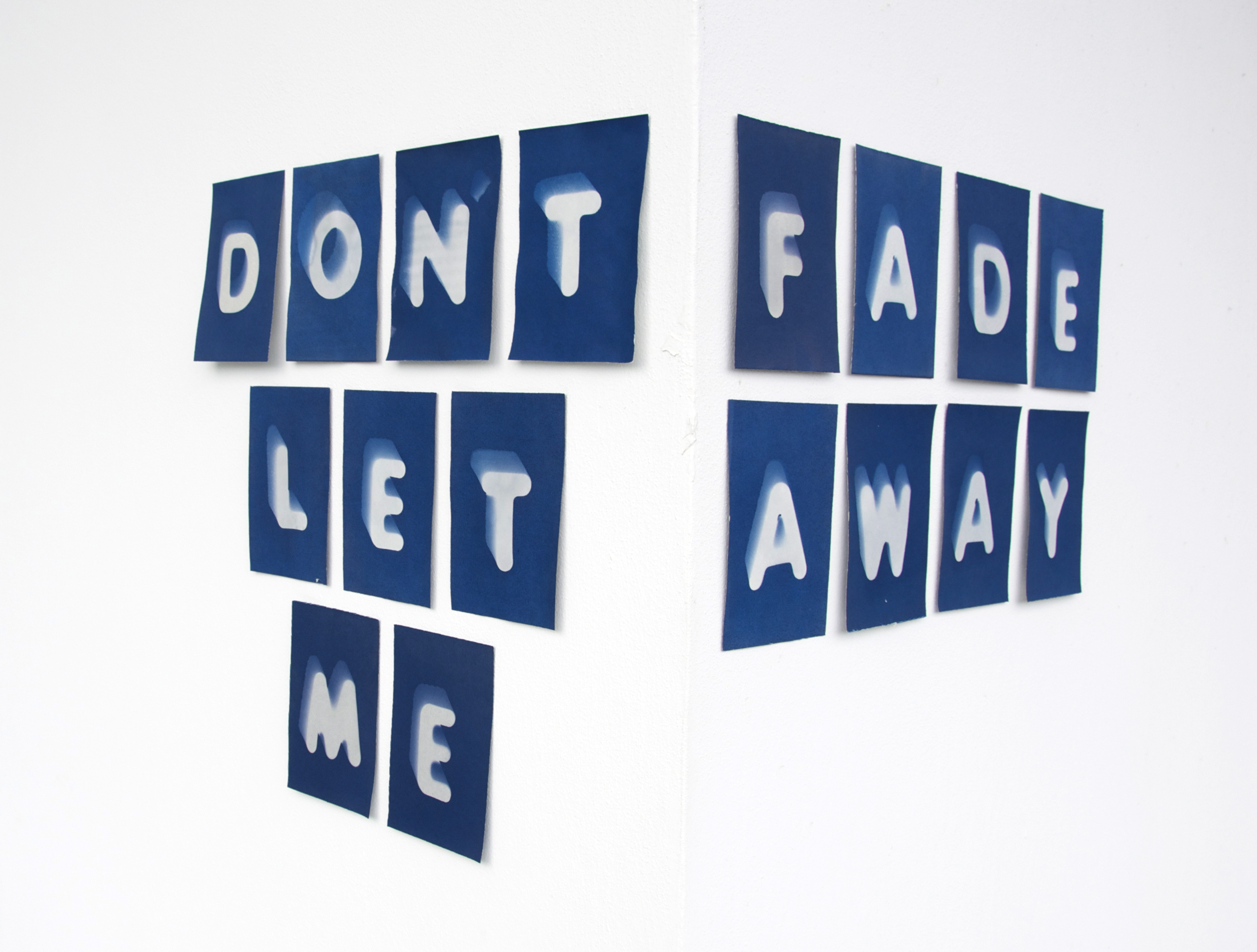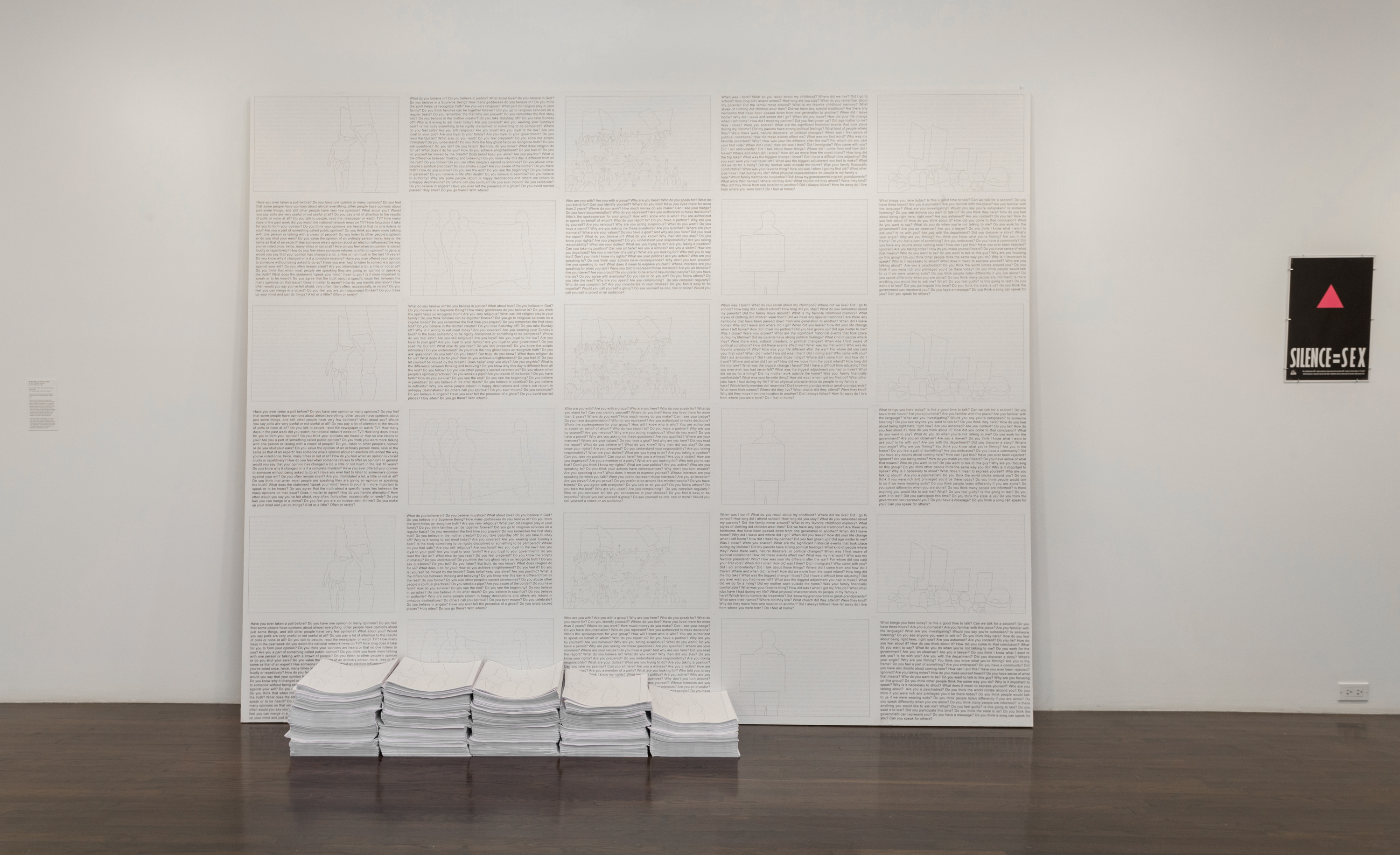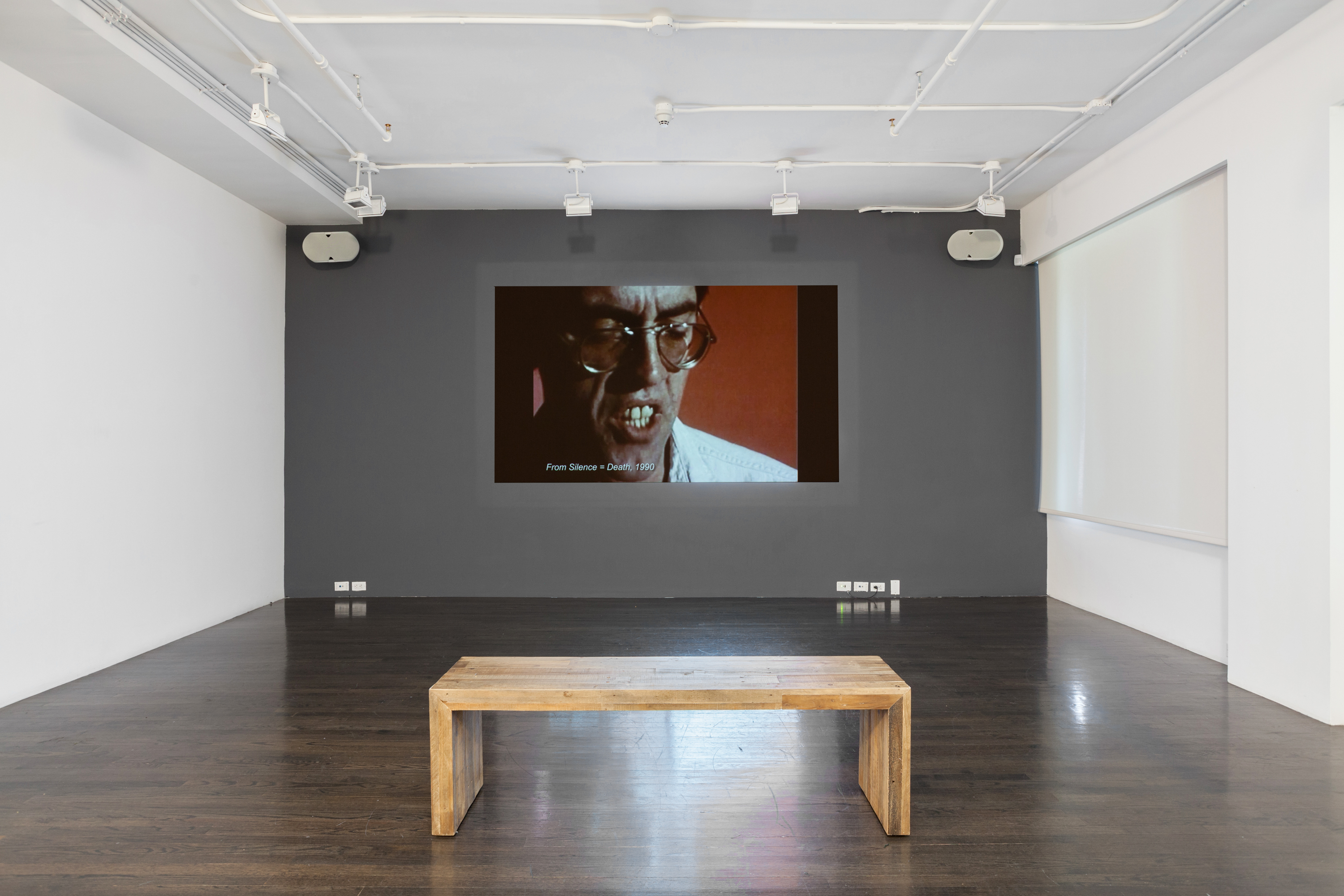Voice = Survival, installation view, 2017 [courtesy of The 8th Floor Gallery, New York]
VOICE = SURVIVAL
Share:
When members of the collective of six gay men who created the SILENCE = DEATH project in 1987 were deciding on the image their posters would bear, they initially rejected the already-widespread pink triangle because of its association with Nazi concentration camps, where a downward-pointing version of the same symbol was used as a badge to identify homosexual men. The activists eventually redressed this traumatic connotation by inverting the triangle, making it point upward, an interpretive repositioning that collective member Avram Finkelstein has described as “a gesture of disavowal of victimhood.” With VOICE = SURVIVAL [June 15–August 11, 2017]—a group exhibition at The 8th Floor in New York, curated by Claudia Maria Carrera and Adrian Geraldo Saldaña—the slogan SILENCE = DEATH was similarly inverted, offering a reinvigorated critical approach to the ongoing HIV/AIDS epidemic, and the ways artists and organizers have confronted this crisis’ social and political legacies.
More than just a positive alternative to silence, speech and language loomed throughout the exhibition as the vital mediums employed by both activists and artists in the struggle for recognition amid the epidemic. Included were documentation of public speeches at 1980s ACT UP rallies, and a video performance of Zoe Leonard’s I want a president by genderqueer HIV-positive rapper Mykki Blanco, originally released during the 2016 American presidential campaign. By featuring such archival materials alongside artworks, VOICE = SURVIVAL usefully complicated distinctions between art and activism in a way that reflected the multifaceted forms of cultural production that have been deployed against political inattention, medical ignorance, and religious intolerance regarding HIV/AIDS.
Two video installations cycled through scenes from documentaries including Silence = Death (1990), Fight Back, Fight AIDS: 15 Years of ACT UP , and How to Survive a Plague (2012), as well as excerpts from films by French director Yann Beauvais, Chicano artist Guillermo Gòmez-Peña, and poet and filmmaker Marlon Riggs. Riggs’ 1991 film Anthem resembled an experimental music video, layering a hip-hop beat and remixed audio recordings of poems by Essex Hemphill and others over video montages of shirtless black men kissing, a dancing figure wearing a SILENCE = DEATH T-shirt, and images of American and Pan-African flags. Given the relative whitewashing of the history of artists’ responses to HIV/AIDS in 2015’s Art AIDS America—generously touted upon its opening at the Tacoma Art Museum as the first comprehensive survey of such artwork—the inclusion of Riggs’s work in VOICE = SURVIVAL is particularly important in directly addressing black gay identities.
SILENCE = DEATH originally developed as a poster, precisely because of the public nature of this format; several of the artists included in VOICE = SURVIVAL also draw upon the accessibility of posters, and upon the potential impact of graphic design. Gran Fury, an artist collective that grew out of ACT UP in the late 1980s, appropriates President George H.W. Bush’s famous campaign line “Read my lips: no new taxes” for its 1988 series Read My Lips, which inserts the phrase in bold, capitalized text on black-and-white images: one of two men in military uniforms embracing and kissing, and another of two women lovingly gazing at each other. These posters originally served as flyers for a queer kiss-in on Sixth Avenue meant to demonstrate that HIV is not transmissible by kissing. Another poster, Donald Moffett’s He Kills Me (1987), draws attention to President Ronald Reagan’s failure to acknowledge the AIDS epidemic, juxtaposing an image of Reagan smirking with a striking graphic of an orange and black target in two side-by-side panels. The poster’s title, rendered in orange text across Reagan’s chest, is meant literally.
The sound of the human voice itself—stark, idiosyncratic, and fleeting—provided the most powerful experiences in VOICE = SURVIVAL, offering moments when the viewer instead became the listener. Without any visual supplementation, pairs of headphones played audio recordings of two African American feminist poets, Audre Lorde and Pat Parker: Lorde reading from the original draft of her essay “The Transformation of Silence Into Language and Action” at the 1977 MLA Annual Convention in Chicago, and Parker reciting her poem “Where Will You Be?” at the National March on Washington for Lesbian and Gay Rights in October 1979.
Gran Fury, “Read My Lips,” 1988, poster reproduction from digital scan, photocopy on paper [courtesy of Avram Finkelstein, The 8th Floor Gallery, New York]
These unvarnished recordings conveyed a vibrancy that would have been difficult to capture in an exhibition text, for instance, and distilled an urgency that video recording might have mitigated. Parker’s words in particular echo across history to our present moment: “They will not come/clothed in brown,/and swastikas, or/bearing chest heavy with/gleaming crosses./The time and need/for such ruses are over.”
Nothing else in VOICE = SURVIVAL, however, matched the poignancy of the cassette tapes of voicemails left on the answering machine of artist David Wojnarowicz, who was the lover of photographer Peter Hujar until Hujar’s death from AIDS-related pneumonia in 1987. As the messages played aloud directly from Wojnarowicz’s , listeners could hear the words left by friends and acquaintances while Hujar was diagnosed and hospitalized, and the condolences they left after his death. As voices rang through The 8th Floor’s space, punctuated by a screeching beep, it was easy to imagine them as the voices of your friends, and the answering machine likewise as your own. “I’m very sorry about Peter,” says one voice. “I hope you’re taking care of yourself, okay? See you soon.”
